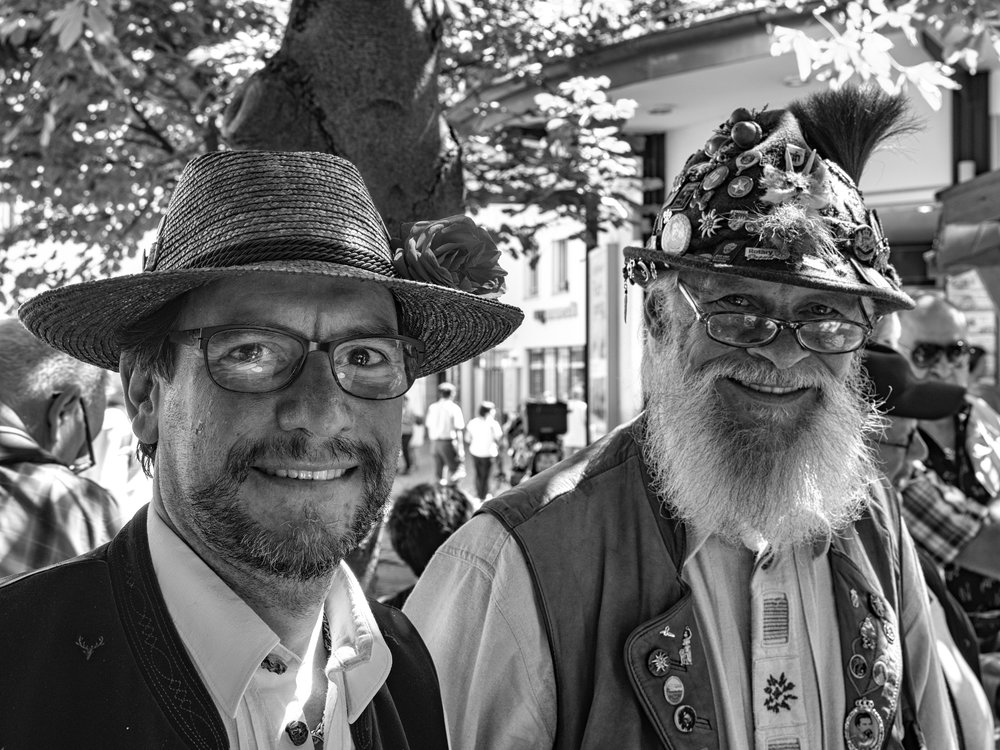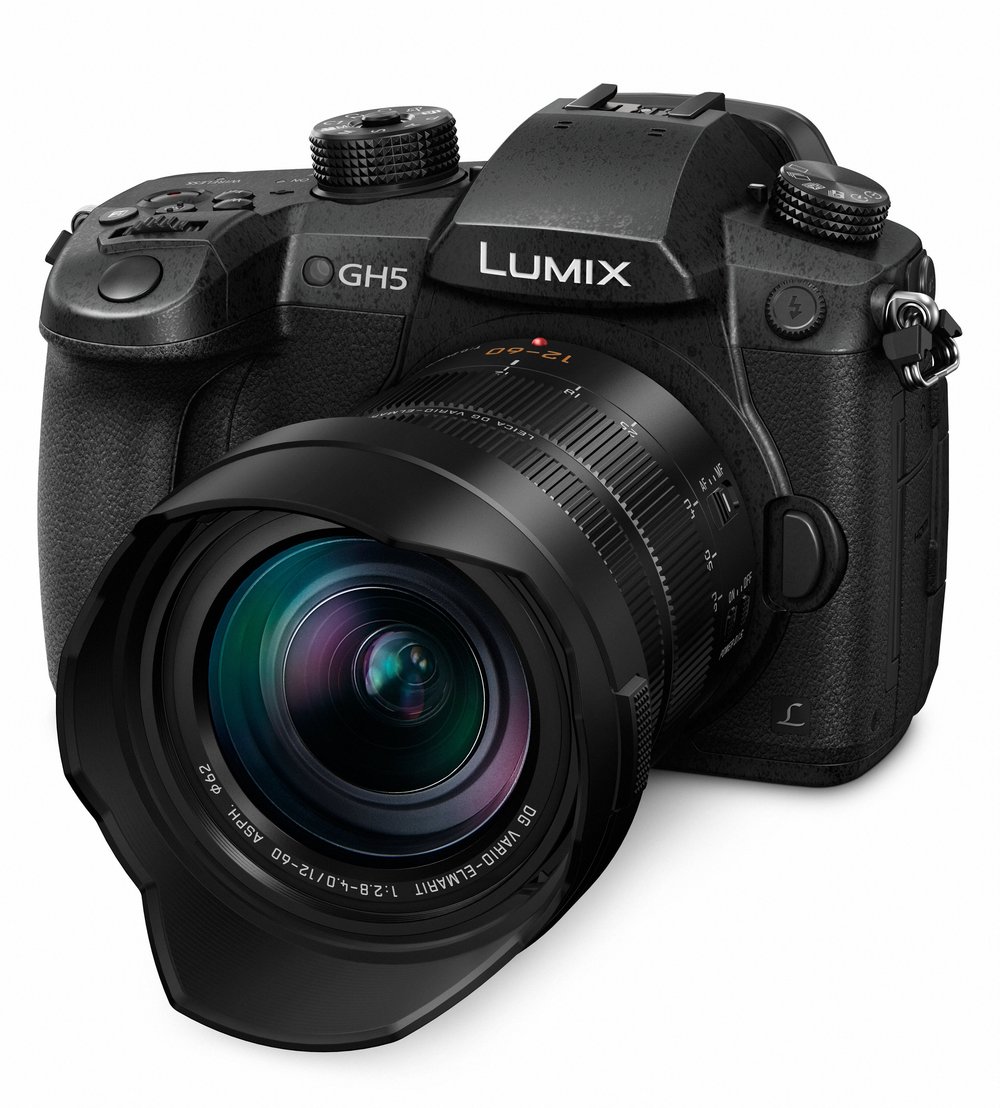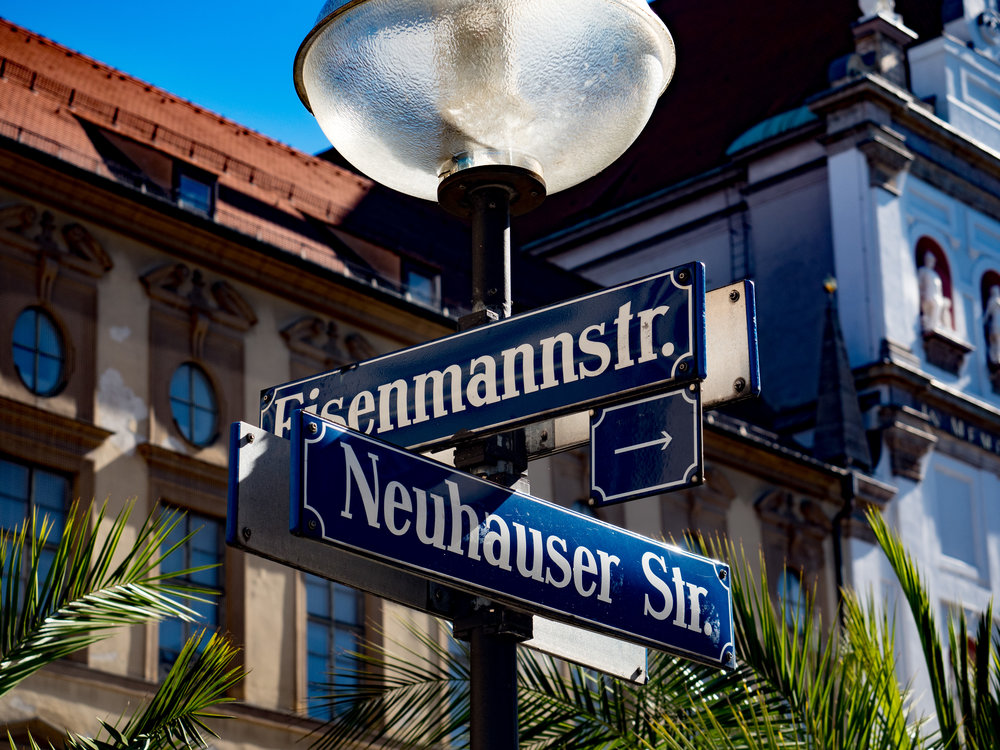
The new 8-18mm Leica DG Vario-Elmarit wide-angle zoom is a welcome addition to the Lumix G professional lens lineup. It has the same f/2.8-f/4 aperture range as the longer 12-60mm Vario-Elmarit and creates a perfect combination
Panasonic has made another addition to the growing crop of professional m4/3 optics for Olympus and Panasonic cameras. The Leica DG-branded 8-18mm wide-angle zoom is a companion to the 12-60mm “standard” zoom which appeared at Photokina last year.

Ein Prosit, ein Prosit, der Gemütlichkeit! At a Munich beer garden with the Olympus 12-40mm and PEN-F. With a zoom lens like this you don’t hanker too much after your bag of fast primes
Over the past few years Panasonic, aided and by a Leica design team, has been beavering away on a constantly evolving range of professional lenses for the micro four-thirds system. Olympus, too, has been upping the ante with its “Pro”-branded lenses such as the standard 12-40 f/2.8 zoom and the fast f/1.2 25mm. In most instances, these superior lenses have lesser siblings, at much lower prices, but the two manufacturers have taken the view that there is a market for premium glass. These lenses are better constructed, using metal instead of plastic, and have improved optics. The manufacturers were not wrong, because these expensive bits of glass are apparently flying off the shelves.
Below: Three Leica DG professional lenses for the m4/3 system: Left to right, the 42.5mm Nocticron, the 12-60mm Vario-Elmarit and the 12mm Summilux
I’m a great fan of the Leica DG m4/3 range, especially the newer primes with physical aperture rings — including the 15mm f/1.7 Summilux, the 12mm f/1.4 Summilux and the 42.5mm f/1.2 Nocticron. Late last year the new standard zoom — with a 12mm to 60mm range (24-120 in 35mm equivalence) was introduced and is only now trickling slowly through to dealers’ shelves, mostly in kit form with the new and much sought-after GH5. This zoom is no bigger than the Olympus 12-40, although a tax slower with its f/2.8-f/4 range. But it does have internal stabilisation, unlike the Olympus and offers a more useful range of focal lengths. I see it as a high-performance, solid lens to keep on your GX8 or GH5 all day long.

A medium-range premium zoom such as the Olympus 12-40 — snapping here in Salzburg — is an ideal travel companion. Just one lens to carry and no compromise. This particular lens is fast for a zoom, with a a constant f/2.8. The new Leica DG 12-60 is a slightly slower alternative but it longer reach which will be a attraction, particularly bearing in mind its small size and light weight.
The Leica DG 12-60, new as it is, now has sibling that will create a compelling combo of lenses. The 8-18mm offers a full-frame equivalent focal length of 16-36mm while retaining the f/2.8-f/4 aperture range of the longer zoom. Unlike previous ultra-wide professional zooms such as the Olympus 7-14mm, the Leica DG offers perhaps a more usable range, losing out at the wide end but extending to a 36mm focal length, particularly appealing to street photographers. Together with the 12-60, these two lenses create a compact and very capable travel package when accompanied by either of the two Panasonic flagships or, even, the Olympus PEN-F or the OM-D EM.

The latest Panasonic Lumix GH5 with its “kit” lens that is far more than a kit: The Leica DG 12-60mm zoom which gives a 35mm-equivalent range of 24mm to 120mm. This the lens is no bigger than the Olympus 12-40, although it is a tad slower. As an all rounder, thought, this is a compelling optic.
Zoom lenses have come a long way in the past five years. The “kit lens” reputation has been dispelled and most of the new crop of premium lenses can compete well with primes at every focal length. I’ve praised the Leica 24-90mm SL enough in the past as a lens that never leaves me lusting after a prime. Apart from its relatively slow aperture range, the 24-90 performs brilliantly for most of the time.
So it is with small-format zooms. The Olympus 12-40 and, I am sure, the Leica DG 12-60, will provide the same sort of capability within the m4/3 world. Primes are still desirable for extreme subject separation or grabbing shots in ultra-low light, but for daytime use the once-humble zoom is now a very logical choice. Even the slower apertures of zooms is not so much a disadvantage in these days of soaring ISO performance. Such professional-quality premium zooms, from Panasonic and Olympus, from Fuji and other manufacturers, are on the way to becoming a one-size-fits-all solution for the traveller.

Modern high-performance zooms are pointing the way to a lighter travel kit: Here the Olympus 12-40 Pro zoom and the Olympus PEN-F is out and about in the centre of Munich.
It’s fashionable for photographers to look down their experienced noses at zoom lenses. In the days of the Canon and Nikon DSLR kits, perhaps this was justifiable; although, to be frank, even some of the cheapest, plastic-mount lenses were not at all bad. But these days, the pro zooms can more than hold their own and their convenience is edging out the prime.
I am looking forward to getting my hands on the Leica DG 12-60, which provides more or less my ideal range of focal lengths, with a welcome boost at the long end without an accompanying size or weight penalty. And the new 8-18 wide-angle is another lens I would like to try.
_______________

They’re sharp an’ contrasty an’ all, but where’s the bokeh?! If you like a bit of soft background, the kit lens will never be as good as a fast prime…
Lovely pictures, marvellous definition. Could actually almost make one think of going over to MFT…………….but that would be a very big sell-off and re-buy!
At web-page resolution there isn’t much to choose between different formats. I’m very happy with MFT results and, as long as you are not wanting to print a poster to go on the side of bus there’s a lot to be said for a lighter system. I find it nice to be able to swap between different systems. And…. it gives me something to write about.